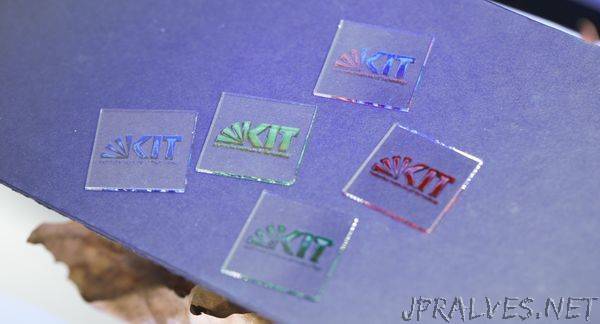
“The goal of PRINTPERO is to develop digitally printed, highly efficient and stable solar modules that can be integrated into roofs, facades, and windows. In the project coordinated at the Karlsruhe Institute of Technology (KIT), German and Greek researchers and industrial partners are demonstrating the technological feasibility of solar modules based on perovskite absorbers. They work on prototypes that can be freely designed in size, shape, and color. The Federal Ministry of Education and Research supports the project within the framework program Research for Sustainable Development (FONA).
Perovskite semiconductors are currently among the most promising materials for highly efficient and cost-effective next-generation solar modules. Thin-film solar cells based on these perovskites already achieve efficiencies of more than 23 percent in the laboratory. However, the processes currently used in research to manufacture perovskite solar cells cannot be transferred to industrial standards. “One goal of our project is therefore to replace laboratory processes by digital printing processes that run at low temperatures and are suitable for industrial production,” explains Dr. Ulrich W. Paetzold, head of the research group “Advanced Optics and Materials for Next Generation Photovoltaics” at KIT’s Institute for Microstructure Technology (IMT) and KIT’s Light Technology Institute (LTI) and coordinator of PRINTPERO (short for Printed Perovskite Modules for Building Integrated Photovoltaics).
In the PRINTPERO project, researchers and industrial partners from Germany and Greece are cooperating to develop digitally printed solar modules based on perovskite semiconductors that are not only highly efficient and stable, but also meet a wide range of architectural requirements for integration in buildings. They work on prototypes which can be designed in different shapes and colors. To achieve these goals, the participating researchers use the potential of digital inkjet printing. In addition, they develop printable luminescent layers to realize different color impressions and protect solar cells from harmful UV radiation (see photo).
Together with the project partners, the Karlsruhe researchers are also working on improving the stability of the perovskite solar cells, connecting several of these cells in series to form large-area solar modules, and encapsulating the modules to protect them from moisture and the resulting decay.
PRINTPERO includes the research institutes KIT and the Technological Educational Institute of Western Greece as well as the solar industry companies SUNOVATION Produktion GmbH (Aschaffenburg/Germany) and Brite Hellas S.A.(Thessaloniki/Greece). Within the framework program Research for Sustainable Development (FONA), the Federal Ministry of Education and Research (BMBF) is funding the three-year German-Greek cooperation project that was launched in 2018.”
